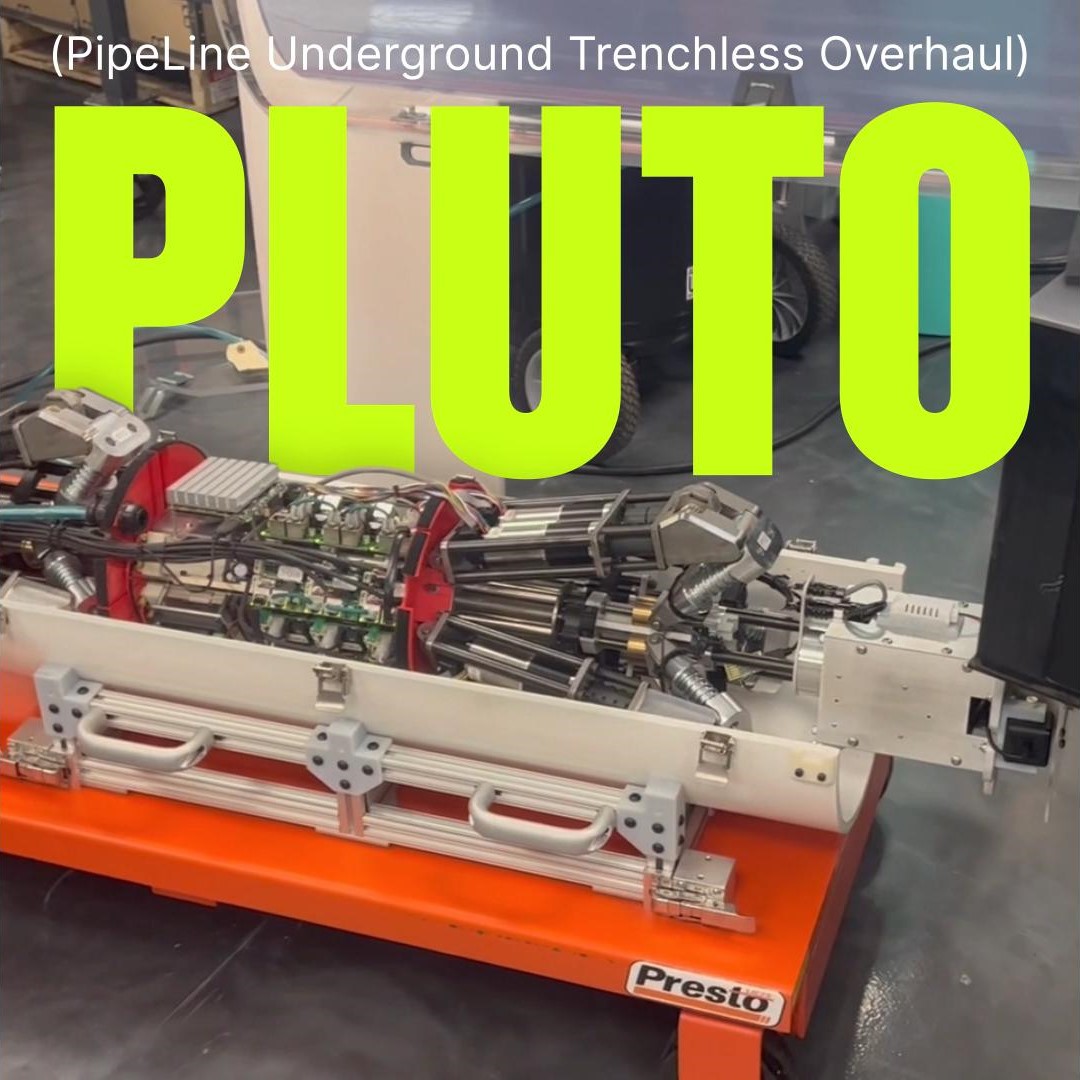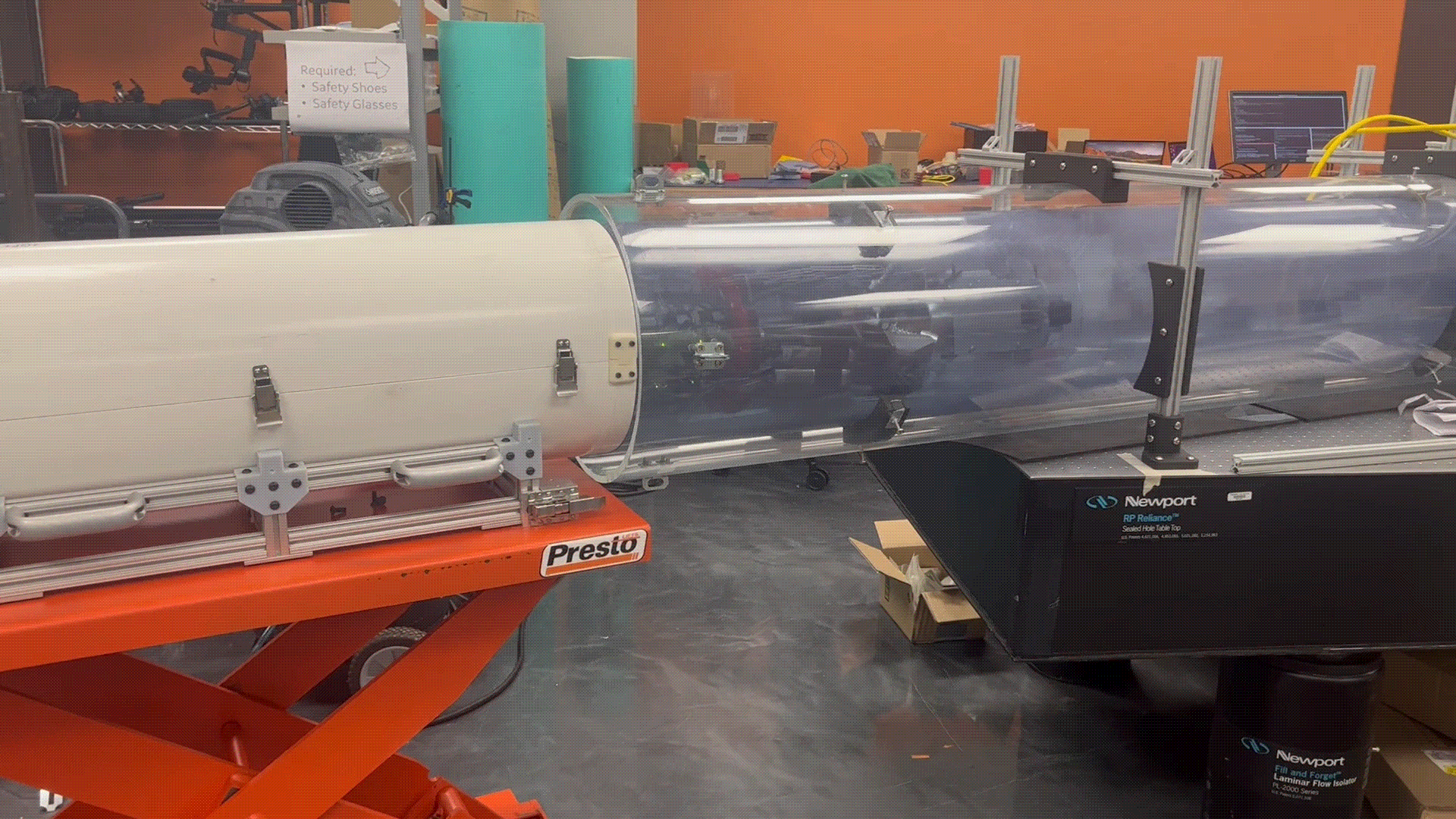What does the name Pluto conjure? Fearsome god of the underworld or happy cartoon dog? For engineers at GE Vernova Advanced Research, it seems to be a little of both: They’ve bestowed the famous name on a self-crawling, money-saving, epoxy-spraying robot that is designed to descend into and enter aging pipelines and cheerfully repair them from the inside. Just a bit bigger than a Yorkshire terrier, PLUTO is soon expected to start scratching away at one of the world’s most intractable emissions challenges: methane leakage.
Natural gas (methane) leakage from the world’s pipelines is a silent but serious problem whose scope keeps expanding with every new measurement. The bulk of the emissions come directly from oil and gas drilling, but after a century of pipeline growth, methane now escapes along the whole length of the supply chain. A recent IEA analysis found that the production and use of fossil fuels resulted in close to 120 million metric tons of methane emissions in 2023. To limit global warming to 1.5 degrees Celsius, a key goal of the Paris Agreement, methane emissions from fossil fuels need to decline by 75% this decade, according to the IEA analysis.

ARPA-E, the U.S. Energy Department’s in-house research and innovation think tank that pursues technological breakthroughs, thought the problem serious enough that in 2020 it kicked off an initiative to throw an array of new technologies at the issue. ARPA-E put out the call for solutions, which it dubbed REPAIR (Rapid Encapsulation of Pipelines Avoiding Intensive Replacement), with an emphasis on lowering repair costs. The PLUTO project at GE Vernova Advanced Research was one of the early recipients of that funding. (PLUTO, too, is an acronym, for Pipe Line Underground Trenchless Overhaul, but saying “PLUTO” is faster and a little more fun.)
“PLUTO came from some of that work I leveraged in my graduate school research,” says Alexander Duncan, lead engineer for autonomous systems at GE Vernova Advanced Research. “I came into the company’s engineering development program and we immediately started working on ways we could gain access to debilitated pipelines.” According to Duncan, current pipeline repair methods are costly and slow and rely on old technology called a sled. Because these methods are costly, industry is less inclined to do the repairs. “The Department of Energy is really interested in addressing high-risk, high-reward problems, things that industry are likely not going to invest in on their own,” he says. PLUTO, however, aims to lower pipeline repair costs fivefold, and total savings could be as high as twentyfold.
How does PLUTO lower costs? Being a robot, it has more onboard intelligence than any equipment before it, which will enable it to travel longer distances. PLUTO is designed to negotiate more difficult pipeline intersections, which can be thought of as roads, with T-junctions, forks, and curves. And because pipe is almost invariably buried underground or underwater, the robot’s ability to travel much longer distances means the initial digging to get it down into the pipe needs happen only once. PLUTO is basically a dog that, once you let it loose, can travel hundreds of feet without a drink of water.
PLUTO also has the ability to inspect pipes as it moves forward but does its repairs while moving backward. Here’s how it works: Tension-spring legs anchor the robot to the interior walls of the pipeline, while small wheels propel it. As PLUTO slowly withdraws, its spray head coats the walls with epoxy, which not only repairs existing leaks but actually forms a new hard wall — a new pipe, says Duncan, inside the existing pipe.
He and his team have also made that spray head modular. Why? So that it can be removed and replaced with an inspection head that can move back through the pipe when the epoxy coat has fully set, to perform quality control. “Since we have control of the tool directly inside of the pipeline, we can also do more sophisticated things like angle the spray or apply coatings of varying thicknesses in different sections of the pipe — which is really useful for things like joints that have stress concentrators,” Duncan says. “So the precision of the tool for application is also a pretty big value add.”
And here’s an exciting bonus: PLUTO’s not just for tackling the problem of leaks from natural gas pipelines. The robot is expected to be suited to water lines, too. According to Duncan, this represents another huge, addressable market — California, for example, loses 7% of its water each year to leaks, and that’s just in the residential sector.
As the world moves through the current energy transition, demand for new oil and gas pipelines is expected to decline. But new forms of energy, such as hydrogen, are anticipated to expand, needing their own pipeline systems — ones like the enormous Hydrogen Backbone scheduled to be built in Europe. Could PLUTO be of help here too? Definitely, says Duncan. “We may be able to actually utilize the PLUTO tool and hydrogen-specific coatings to reconfigure or even hybridize existing networks at a much lower cost to be hydrogen compatible. This would probably be several orders of magnitude cheaper than laying down an entirely new pipeline network.”
Duncan and his team are excited to give PLUTO a chance to show off its tricks later this summer, when demonstration trials begin. “The way this industry works, there’s essentially contractors who bid on repair proposals. So, of course, we’ve invited them to come watch the operation live. The general idea is to build trust, get some regulatory buy-in, because PLUTO is very different from things that are being put into pipes right now,” which are basic repair wagons that get dragged through the pipe. Now those observers will witness an intelligent robot with a precise skill set, fitted with technical intelligence directly on board. The ARPA-E investment and GE Vernova’s engineering efforts are expected to pay off in a big way if PLUTO can dig for leaks, patch up the holes, and return from the underworld having done a good job.
